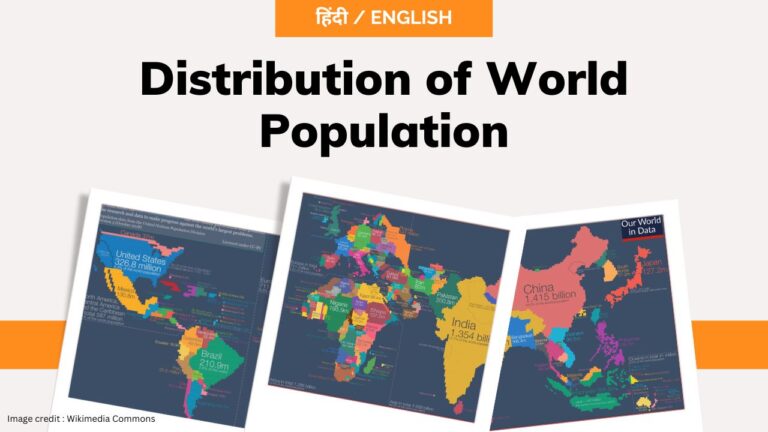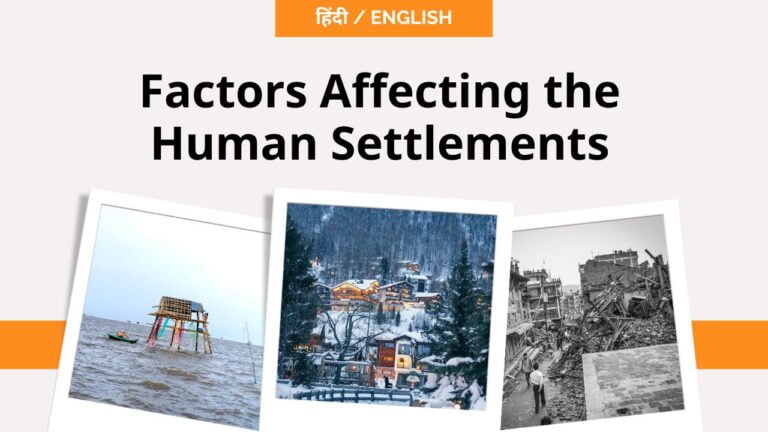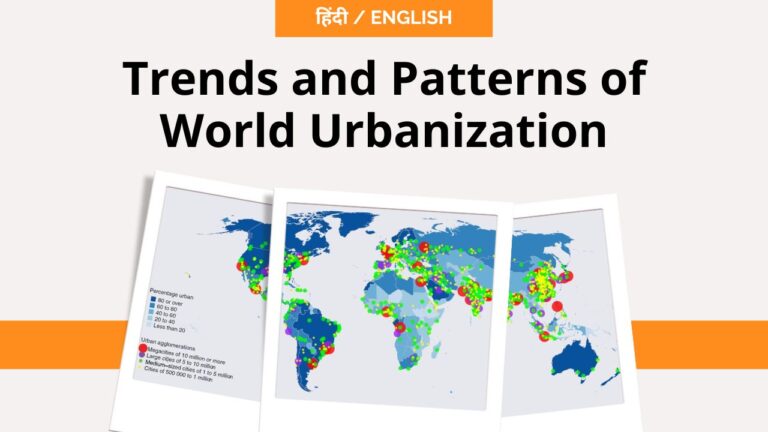Age and Sex Composition of Population (India)
Human Geography
Index
Age and Sex Composition of Population (India)
The age and sex composition of a population refers to the distribution of people in a given area according to their age and gender. In other words, it is the distribution of people according to their age and gender. This information is essential for understanding the health, education, economic and social needs of a population. India is the second most populous country in the world with a population of over 1.39 billion as of 2021. (Now it is the most populous country of the world.) Here are some of the details of the age and sex composition of the Indian population.
1- Age Composition
Age-wise, the population of India is relatively young, with around 65% of the population below the age of 35 years. The median age of the population is around 28 years, which is much lower than the global median age of around 30 years.
According to the Census of India 2011, the age distribution of the Indian population is as follows:
Children (0-6 years): 158.8 million (12% of the population)
Adolescents (10-19 years): 243.4 million (19% of the population)
Adults (20-59 years): 704.1 million (55% of the population)
Elderly (60 years and above): 104.1 million (8% of the population)
The proportion of children (0-6 years) has decreased from 15% in 2001 to 12% in 2011, which indicates a decline in fertility rates. The proportion of the elderly population (60 years and above) has increased from 7.5% in 2001 to 8% in 2011, which indicates an increase in life expectancy.
The youthfulness of India's population is due to a combination of factors, including high birth rates, improved healthcare facilities, and a decline in infant mortality rates.
2- Sex Composition
India has a slightly higher proportion of males than females. According to the latest census conducted in 2011, the sex ratio of India is 943 females per 1000 males, which is below the global average of 1027 females per 1000 males. But this is an improvement from the sex ratio of 933 females per 1000 males in 2001. However, there are significant variations in the sex ratio across states and regions of India. Some states have a very low sex ratio, which indicates a preference for male children and sex-selective abortions.
The proportion of females is lower in the adult population as compared to the child population. This is because of the higher mortality rate among females due to gender-based violence, discrimination and neglect. The female-male ratio in the elderly population is slightly higher than in the adult population, indicating an improvement in the status of women in recent years.
Implications of Current Age and Sex Composition
The age and sex composition of the Indian population have several implications for the country's social and economic development.
The high proportion of children and adolescents indicates the need for investment in education, healthcare and nutrition programs. The young population also presents a demographic dividend, which can be harnessed by investing in skill development and job creation.
The increase in the proportion of elderly people presents a challenge for the country's healthcare system and social security programs.
The low sex ratio and the discrimination against women in various spheres of life indicate the need for policies and programs to empower women and promote gender equality.
Conclusion:
In conclusion, the age and sex composition of the Indian population present both challenges and opportunities for the country's development. The young population presents a demographic dividend, but the increase in the proportion of elderly people presents a challenge for the healthcare system and social security programs. The low sex ratio and discrimination against women highlight the need for policies and programs to empower women and promote gender equality.
Share
Other Topics
Unit - III







